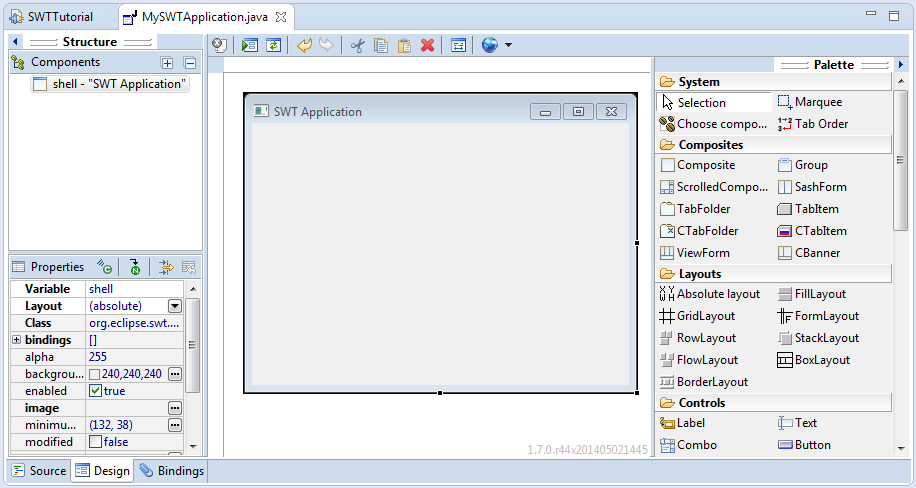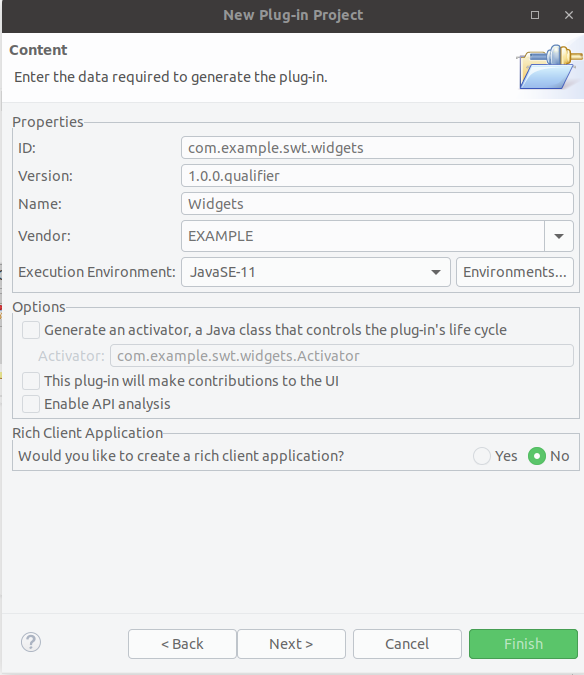

Swing GUI elements are all-Java with no native code: instead of wrapping native GUI components, Swing draws its own components by using Java 2D to call low-level operating system drawing routines.
#Make swt application for mac on windows software
Swing was developed to provide a richer set of GUI software components than AWT. Swing was the next generation GUI toolkit introduced by Sun in Java Platform, Standard Edition (J2SE) 1.2. The original AWT was a simple Java wrapper library around native ( operating system-supplied) widgets such as menus, windows, and buttons. The first Java GUI toolkit was the Abstract Window Toolkit (AWT), introduced with Java Development Kit (JDK) 1.0 as one component of Sun Microsystems' Java platform. 2.5 Extensibility and comparison to other Java code.The toolkit is free and open-source software distributed under the Eclipse Public License, which is approved by the Open Source Initiative.

Programs that call SWT are portable, but the implementation of the toolkit, despite part of it being written in Java, is unique for each platform. To display GUI elements, the SWT implementation accesses the native GUI libraries of the operating system using Java Native Interface (JNI) in a manner that is similar to those programs written using operating system-specific application programming interfaces (APIs).

It is an alternative to the Abstract Window Toolkit (AWT) and Swing Java graphical user interface (GUI) toolkits provided by Sun Microsystems as part of the Java Platform, Standard Edition (J2SE). It was originally developed by Stephen Northover at IBM and is now maintained by the Eclipse Foundation in tandem with the Eclipse IDE. The Standard Widget Toolkit ( SWT) is a graphical widget toolkit for use with the Java platform.


 0 kommentar(er)
0 kommentar(er)
